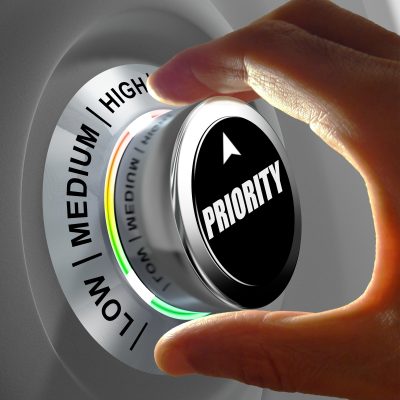Practical Steps for Municipal AM Programs
When it comes to municipal operations, one of the most significant responsibilities is ensuring that critical services are delivered reliably, safely, and efficiently. But how do municipalities prepare for the unexpected? How can they make informed decisions to prevent service disruptions, safeguard finances, and protect community well-being? The answer lies in risk management, a core component of any effective Asset Management (AM) program.
Risk management in the context of Asset Management can be simply defined as addressing the possibility of failures that could lead to the loss of service provision. Whether it’s a water main break that disrupts clean water access, a bridge closure that affects transportation routes, or facility failures that impact community spaces, understanding and managing these risks ensures that municipalities are proactive instead of reactive.
Why Risk Management Matters in Municipal Asset Management
For municipalities, especially those in small or rural communities, the consequences of not addressing risks can be significant. Service interruptions can inconvenience residents, create safety hazards, and strain already limited budgets. While many municipal leaders acknowledge these risks, some may find it difficult to prioritize risk management amid competing demands and resource constraints.
Take, for example, the case of a rural Manitoba municipality where a section of the wastewater main network failed after years of deferred maintenance. The repair not only required immediate emergency funding but also caused environmental concerns and community frustration over service disruptions. Situations like this are not uncommon. Many small municipalities face similar challenges—aging infrastructure, limited maintenance budgets, and competing capital priorities all contribute to elevated risk levels.
By implementing practical risk management strategies, municipalities can make smarter decisions that prevent these costly surprises. More importantly, effective risk management improves service delivery, reduces financial strain, and ensures the safety and well-being of the community.
Breaking Down the Risk Management Puzzle
Risk management isn’t just one step—it’s a series of interconnected components that work together to identify, assess, and mitigate potential failures. Think of it as a puzzle: each piece plays a crucial role in forming a complete picture. Let’s explore these components and how they fit into municipal Asset Management.
Identifying Risks: Knowing What Could Go Wrong
The first piece of the puzzle is risk identification. You can’t manage what you haven’t identified. This step involves understanding which assets are vulnerable and what could potentially cause service failures. Risks might stem from aging infrastructure, inadequate maintenance practices, environmental factors, or even human error.
and what could potentially cause service failures. Risks might stem from aging infrastructure, inadequate maintenance practices, environmental factors, or even human error.
Workshops and stakeholder engagement have proven to be effective methods for municipalities. Engaging public works staff, utility operators, finance personnel, and community representatives in open discussions often uncovers risks that might not be apparent through data alone. Front-line staff, for instance, may recall recurring equipment malfunctions or maintenance challenges that haven’t been documented.
In one rural Manitoba municipality, a diverse Asset Management team came together to discuss potential risks. By pooling knowledge from public works, administration, and council members, they were able to identify overlooked vulnerabilities, including outdated service connections and inconsistent inspection records. This collaborative approach provided a more comprehensive understanding of potential failure points.
Assessing Risks: Understanding the Impact and Likelihood
Once risks are identified, the next piece is assessing them. Not all risks are equal. Some might have a high probability of occurring but minimal impact, while others could be rare but catastrophic if they happen. Assessing risk involves evaluating both the likelihood of an event occurring and the consequence if it does.
While there are technical tools available for risk assessment, like Failure Modes and Effects Analysis (FMEA) and Monte Carlo simulations, small municipalities don’t need to dive into complex methodologies to get started. Instead, they can use practical, non-technical approaches.
- FMEA: This framework helps identify how an asset might fail, the effects of those failures, and the severity of their impact. In a municipal setting, it could be as straightforward as gathering staff to brainstorm, “How could our water distribution system fail? What would happen if it did?” By assigning simple scores for likelihood and impact (e.g., 1 to 5), municipalities can rank risks and prioritize responses.
- Monte Carlo Simulations: While more data-driven, these simulations model a range of possible outcomes based on different scenarios. For municipalities with limited resources, consultants or regional partnerships can help conduct these analyses when making significant capital decisions.
Using a simple risk matrix helps visualize which risks demand immediate attention. For example, a small town might find that while pothole repairs are common (high likelihood), the consequences are relatively low compared to a failing wastewater lagoon berm, which, though less likely, could have severe environmental and safety implications.
Mitigating Risks: Finding the Right Solutions
Mitigation is about taking steps to reduce either the likelihood of a failure occurring or the severity of its consequences. However, mitigation strategies will vary widely depending on each municipality’s internal resources and capacity.
Some municipalities can rely on in-house staff for maintenance and repairs, allowing for quicker responses and lower costs. For example, a community with an experienced public works team may implement routine valve turning programs to prevent water main issues. In contrast, smaller municipalities without sufficient internal expertise may need to depend on contractors for both assessments and corrective actions.
Identifying the right strategy often involves balancing cost, feasibility, and effectiveness. Sometimes, mitigation means investing in infrastructure upgrades, while in other cases, improved operational procedures or staff training can significantly reduce risks.
Prioritizing Risks: Making the Most of Limited Resources
No municipality has unlimited resources. Prioritizing which risks to address first is essential, especially for smaller communities with limited budgets. So how should municipal leaders decide?

Focus on the risks with high consequences for service delivery, public safety, or financial stability. If a particular asset failure could endanger lives or cause significant economic damage, it should be a top priority. On the other hand, risks with low consequences and likelihood can often be monitored without immediate action.
Here are some practical tips for prioritizing risks:
- Use a Risk Matrix: Visual tools help clarify which risks are high priority based on their likelihood and impact scores.
- Consider Service Criticality: Focus on assets critical to essential services like water supply, wastewater treatment, and emergency response.
- Balance Short-Term and Long-Term Risks: While some risks require immediate attention, others can be scheduled for future capital planning.
- Engage Stakeholders in Prioritization: Community input can reveal which risks matter most to residents and elected officials.
Prioritization doesn’t just make planning easier—it also helps justify funding decisions and build community support for infrastructure investments.
Real-Life Risk Management in Action
Consider the experience of a rural Manitoba municipality that faced repeated lift station failures due to aging equipment. Initially, these failures resulted in emergency repair costs, environmental compliance concerns, and frustrated residents dealing with service disruptions. By bringing together a diverse AM team, the municipality was able to identify the root causes and develop a mitigation plan that included preventive maintenance schedules, equipment upgrades, and improved monitoring systems. Over time, the frequency of failures decreased, saving money and improving public trust.
This example underscores the value of proactive risk management. Even small steps, like conducting condition assessments or reviewing maintenance histories, can uncover opportunities to prevent costly breakdowns.
Final Thoughts and Your Call to Action
Risk management isn’t about eliminating risk entirely—that’s impossible. Instead, it’s about making informed choices to manage risks in a way that safeguards service delivery, protects community well-being, and ensures responsible use of municipal resources.
Whether your municipality has a formal risk management framework or you’re just beginning the journey, the key is to start somewhere. Engage your team, leverage local knowledge, and focus on practical solutions that fit your capacity.
How does your municipality currently look at risk? Is it something you actively assess, or is it more of a “don’t want to know” scenario?
I’d love to hear your experiences, challenges, and strategies. Let’s work together to build stronger, more resilient communities through smarter risk management. Share this post with colleagues and friends to start the conversation on how we can better manage municipal risks.
Reach out to me:
- Phone: 204-384-7754
- Email: chad@buhlinam.ca
- LinkedIn: Chad Buhlin
Together, we can manage risk before it manages us.
